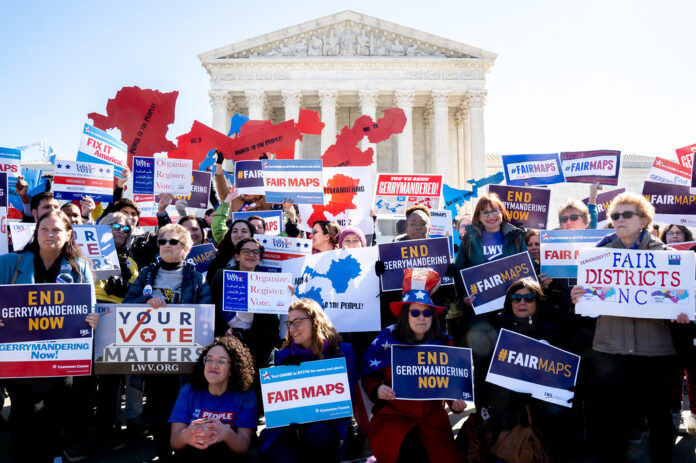Key takeaways
• Three Missouri House Democrats held a 100-hour sit-in to block new GOP maps.
• They oppose a plan that targets a Democratic congressman and limits ballot initiatives.
• National figures like Kamala Harris and members of the Squad offered support.
• Republicans hold power to force votes but face a growing spotlight on their actions.
• Protesters hope to inspire future leaders and protect fair elections.
Missouri Gerrymandering
Three Missouri House Democrats decided to stay put on the chamber floor. Over the weekend, they marked more than 100 hours protesting what they call unfair map changes. They want to stop a move they say will rig districts for one party. They also aim to block a rule that would make it nearly impossible for ballot measures to pass.
Inside the Fight Against Missouri Gerrymandering
Why They Protest
The state’s Republican governor and GOP leaders want to redraw congressional lines. They aim to make it harder for Democrats to win seats. They also propose that any ballot initiative needs approval in every congressional district. This second rule would give a small group of voters the power to sink statewide measures. That plan worries many activists who fear it will weaken citizen voice.
The Sit-In on the House Floor
On Thursday, three Democrats—Jeremy Dean, Elizabeth Fuchs, and Ray Reed—signed a letter asking for talks. When GOP leaders never met them, they refused to leave. They set up camp on the floor of the Missouri House. By Monday, they hit the 100-hour mark. Reed shared updates on social media: “We’re still here because democracy is worth the fight.” He added that Republicans wanted them “tired, quiet, and invisible.” Instead, he said, they are “louder, stronger, and shining a national spotlight on their corruption.”
National Support Joins the Fight
Their protest quickly went viral. Former vice president Kamala Harris called to encourage them. She even sent pizza to keep them fed. Harris posted on social media: “You are not in this alone. We are cheering you on.” The Democratic National Committee chair also voiced support. Representatives from the progressive Squad, including Cori Bush and Rashida Tlaib, joined by phone. Tlaib spoke out against what she called an attempt “to taint our democracy and steal seats.” This wave of backing helped keep the trio’s energy high.
Inside the Battle Over Missouri Gerrymandering
Governor Mike Kehoe and GOP lawmakers argue their map reflects population shifts. They claim the new districts follow legal guidelines. Yet, critics note that the map specifically targets Congressman Emanuel Cleaver, a veteran Democrat. If enacted, his district would cover more rural areas that lean Republican. Meanwhile, the tough new rule on ballot proposals means any local idea must find approval across all eight districts. This, opponents say, creates a nearly impossible hurdle for ordinary voters.
Challenges Ahead
Republicans hold a strong majority in the Missouri House. They can cut off debate and quickly push measures to a vote. In the Senate, Democrats might delay bills, but not here. Still, the sit-in gave Democrats a chance to call out GOP leaders as “subservient to Trump.” State Rep. Keri Ingle pointed out that if the maps already favor Republicans, why redraw them again? She said, “This is an egregious overreach. It’s shameless.” Many rank-and-file Republicans reportedly feel uneasy but fear speaking out.
Why It Matters
Gerrymandering shapes the balance of power. It can decide who wins elections long before voters cast ballots. As the nation heads toward another presidential contest, these lines carry extra weight. If one party controls maps, it can lock in an advantage for years. Moreover, the ballot-initiative rule could strip away a key tool citizens use to change state laws. Activists worry that such barriers drive people away from the political process.
Missouri Gerrymandering and the Future of Democracy
This protest may not stop the vote in the short term. Yet it offers a blueprint for future action. Young leaders like Dean, Fuchs, and Reed refuse to wait their turn. They’ve shown that sustained, peaceful protest can force a broader debate. Across the country, groups watching Missouri may adopt similar tactics. In an age of deep political divides, grassroots pressure can still hold power to account.
What Comes Next
On Monday afternoon, other lawmakers returned to debate the redistricting plan and new ballot rules. It remains likely Republicans will pass both measures. However, the intense public attention may force changes in the Senate or trigger legal challenges. Democrats hope voters will remember this moment in the next election cycle. They argue that shining a spotlight on unfair maps can shift public opinion and spark reform.
The Missouri sit-in reflects a broader clash over how elections are run. It shows that even in states with clear majorities, small groups can push back. As more people learn about gerrymandering and its impact, pressure for fair maps grows. Ultimately, the fight in Missouri could inspire a national push for independent commissions and stronger voting rights protections.
FAQs
What is the Missouri special session about?
It focuses on a new congressional map and a rule requiring ballot measures to pass in every district. Republicans say it updates lines. Critics call it a power grab.
Who led the sit-in on the House floor?
State Reps. Jeremy Dean, Elizabeth Fuchs, and Ray Reed stayed in the chamber. They wanted to block the Republican plan they believe rigs elections.
How do the new map changes affect voters?
The proposed map targets a Democratic congressman and shifts district lines to favor Republicans. It could lock in party control for years.
Can the protest stop the new rules?
Short term, Republicans likely can push the measures through. Yet the sit-in raised public awareness and may lead to legal challenges or future political shifts.

